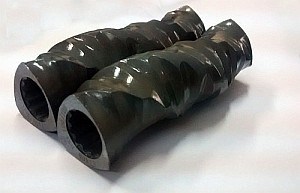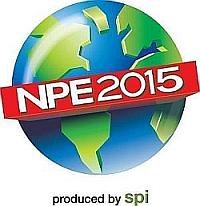Twin-Screw Elements Offer Option to Kneading Blocks
Said to be less harsh while creating 'turbulent mixing' without stagnation.

Twin-screw compounding machine builder Steer introduced at NPE2015 a new series of screw elements that reportedly are suited to replace kneading blocks in certain applications.
Called Melt Formation Elements (MFEs), they will be used on Steer's Mega and Omega co-rotating twin-screw platforms to reportedly provide compounders with improved reliability, reduced wear and increased uniformity of melting and mixing.
Steers says the elements are designed to combat a series of problems faced by compounders of masterbatch, engineering plastics and difficult-to-process materials, notably: high wear; degradation during melting; uncontrolled breakdown in the process and transmission section; and improper material flow causing pressure peaks, which in turn leads to shear peaks that create torque instability and re-agglomeration,
As Steer explains it, while conventional kneading blocks (right handed, left handed or neutral) are effective at dispersive mixing, they are too harsh for many applications. This is because they present a perpendicular face to the flow causing melt stagnation and large pressure and shear peaks during melting.
Notes Dr. Babu Padmanabhan, Steer's managing director & chief knowledge officer, “The MFEs are designed to create turbulence to the melt flow without stagnation. They can replace conventional kneading blocks that suffer from lack of shear uniformity completely removing any right angled face to the melt flow.”

Related Content
-
How to Configure Your Twin-Screw Extruder: Part 3
The melting mechanism in a twin-screw extruder is quite different from that of a single screw. Design of the melting section affects how the material is melted, as well as melt temperature and quality.
-
Understanding 'Boundary Conditions' in Twin-Screw Compounding
In twin-screw compounding, the objective is generally to produce the highest quality product at the maximum strand. But sometimes there are operating parameters that prevent this objective from being realized.
-
What You Need to Consider Before Adding a Compounding Line to Your Operation
Material volume, extruder size, facility space and power, and vendor expertise drive equipment choice.






